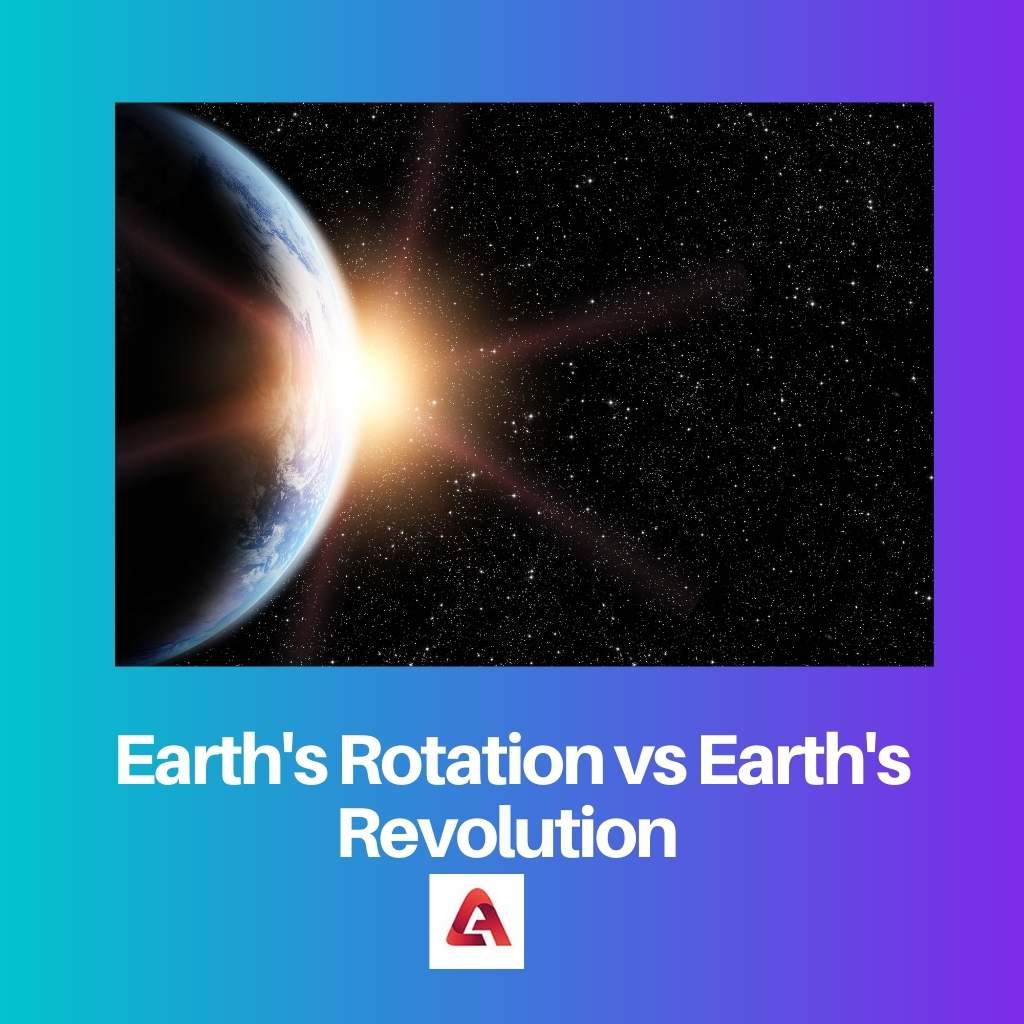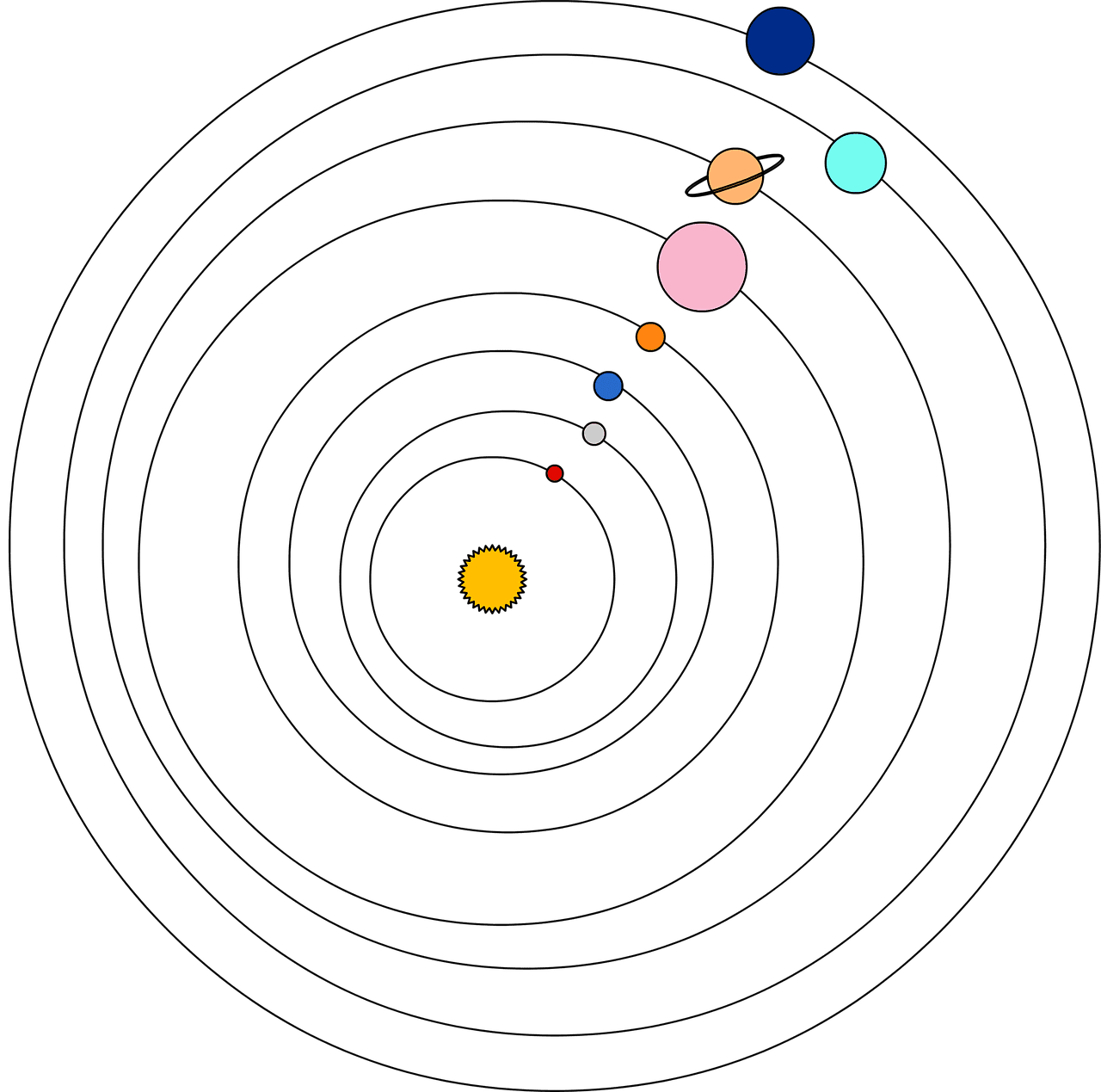We all live on the planet known as Earth. It supports many lives due to its features such as ample water.
And all this is possible due to changes in day to night and seasons. The changes occur due to the movement of the earth in different ways.
The movement of the earth is not only responsible for changes in seasons and days but also contributes in many ways to make life possible on Earth.
Earth can move in different ways, such as rotation and revolution. Some people get confused by both terms as they considered them the same.
But they are both different many times.
Key Takeaways
- Earth’s rotation is the spinning of the Earth on its axis, while Earth’s revolution is its orbit around the Sun.
- The rotation of the Earth causes day and night, while its revolution around the Sun causes the change of seasons.
- Earth’s rotation takes approximately 24 hours, while its revolution around the Sun takes approximately 365.25 days.
Earth’s Rotation vs Earth’s Revolution
The difference between the earth’s rotation and revolution is that in rotation, the earth turns around an internal axis. On the other hand, in revolution, it circles an external axis. To complete a rotation, it took only 24 hours, whereas 365 days are required to complete one revolution. The difference in day to night is due to rotation by revolution, which causes changes in season.

The term ‘rotation’ simply means to spin. When it comes to the Earth, the axis is the Earth’s basis for rotate.
Axis can be defined as an imaginary line that passes through the centre of the earth. It takes 24 hours to complete a whole rotation or spin by the earth.
Earth rotates in a counterclockwise direction.
The term ‘revolution’ simply means to move around something. When it comes to earth, it revolves around the sun. Revolution can also be called the orbit.
It takes 365 days or a whole year to complete a revolution around the sun. The earth, too, revolves in a counterclockwise direction but around the sun.
Comparison Table
| Parameters of Comparison | Earth’s Rotation | Earth’s Revolution |
|---|---|---|
| Interpretation | Earth spins on the axis. | Earth moves around the sun. |
| Axis | Internal | External |
| Speed | 1,674 km/hr | 30 km/s |
| Change in position | No | Yes |
| Location | Within the body of the earth | Outside the earth |
What is Earth’s Rotation?
Earth’s rotation is also known as the Earth’s spin. In this, the planet Earth rotates around its axis. It moves in prograde motion as it rotates eastward.
In the Northern Hemisphere, the North Pole is the place where the Earth’s axis of rotation intersects its surface. In the Southern Hemisphere, the South Pole is the point where the Earth’s axis of rotation links up with the surface.
In ancient times, astronomers believed that planet Earth was a fixed body. Everything in this universe, such as the moon, the sun, the planets, etc., rotates around the Earth.
This is known as the geocentric Model or Ptolemaic Model. Later, many questions arose related to this convention.
Hence, in time it was revealed and proved that the earth is not stationary. Many philosophers and scientists played an important role in coming up with this idea, such as Bishop Nicole Oresme (French philosopher).
Suppose you are standing on the ground, but someone says you are travelling at a speed of 1,674 kilometres an hour. Well, that person is not crazy, it is a fact.
Everyone is moving at the speed of 1,674 kilometres an hour, and this is due to the earth’s rotation. The planet Earth takes a whole day or 24 hours to complete a rotation around the sun.
As earth takes 24 hours to complete rotation concerning the sun. But with others, such as stars, it takes 23 hours, 56 minutes, and 4 seconds.
According to scientists, the earth’s rotation with time is slowing slightly. The length of the day has been increasing since the 8th century by 2.3 milliseconds per century.
Even after consistently slowing down for many decades, it had started spinning faster (report of 2020).

What is Earth’s Revolution?
It is a well-known fact that the earth rotates on its axis, but it also orbits the sun, or it can be said that it revolves around the sun. A fixed path is followed by the Earth around the sun.
It revolves in an anticlockwise direction or from East to West. Earth takes a whole year or 365 days to complete one revolution.
It revolves at a speed of 30 kilometres per second.
Previously it was thought that Earth was located at the centre of the universe. But it was proven wrong by the Stellar Parallax phenomenon.
When we orbit, the position of the star changes. Throughout the year sky looks different at night because the earth is away from the sun, and we can watch it from one direction.
Changes occur whenever the earth orbits. This is the main reason behind, at different times of the year, we see different constellations.
As is already stated, the Earth takes 365 days to complete one orbit. But .25 days are added extra to calendars by every four years.
Which in turn led to the leap year every four years. Normally 365 days are mentioned on the calendar, but in a leap year, 366 days are mentioned.
In February date, 28 extends to 29, leading to one day extra in a leap year.
Earth’s revolution is not only responsible for leap year but also for seasonal changes. Earth experiences direct solar radiation in equal amounts.
This is due to the earth from the top being away from the sun and tilted. As a result, the Northern hemisphere receives direct solar radiation in less amount as compared to the Southern hemisphere.

Main Differences Between Earth’s Rotation and Earth’s Revolution
- Earth rotates west to east or in a prograde motion as it rotates eastward. On the other hand, the Earth revolves around the sun in a counterclockwise direction.
- When it comes to period, the earth, while its rotation, takes only 24 hours or a whole day. Whereas 365 days or a full year is taken by Earth to complete its whole revolution.
- In terms of changes, day-to-night and night-to-day occurs due to the rotation of the earth. This is the main reason behind time differences across the world. The Revolution of the earth is the main reason behind changing of seasons.
- Around the central point, the circle is made by every point in the rotation. Hence, from the centre, there is an equal distance to any point of the earth. On the flip side, a revolution is made in orbit or a fixed path that is around the sun and can be called a circumference.
- To make it clearer, the example can be taken from real life. Such as for the earth’s rotation can be the spinning top and hands of the clock. While merry go round and round a curve in a car are examples of Earth’s revolution.

- https://www.annualreviews.org/doi/pdf/10.1146/annurev.ea.16.050188.001311
- https://www.annualreviews.org/doi/abs/10.1146/annurev-earth-072020-055249
Last Updated : 15 August, 2023


Emma Smith holds an MA degree in English from Irvine Valley College. She has been a Journalist since 2002, writing articles on the English language, Sports, and Law. Read more about me on her bio page.

It takes 24 hours to complete a whole rotation or spin by the earth. The earth too revolves in a counterclockwise direction but around the sun.
The relationship between the Earth’s rotation and its revolution is truly fascinating.
To complete a rotation, it took only 24 hours, whereas 365 days are required to complete one revolution. The difference in day to night is due to rotation by revolution, which causes changes in season.
Understanding these concepts truly allows for a greater appreciation of our world’s workings.
The intricacies of planetary motion never cease to amaze me.
The rotation of the Earth causes day and night, while its revolution around the Sun causes the change of seasons.
The axis of the Earth plays a crucial role in its rotation and revolution. It is fascinating how these factors contribute to life on Earth.
Everyone is moving at the speed of 1,674 kilometres an hour, and this is due to the earth’s rotation. The planet Earth takes a whole day or 24 hours to complete a rotation around the sun.
Learning about the Earth’s rotation and revolution opens up new perspectives on our place in the universe.
The movement of the Earth is a testament to the wonders of the natural world.
The axis of the Earth plays a crucial role in its rotation and revolution. It is fascinating how these factors contribute to life on Earth.
The Earth’s rotation and revolution demonstrate the complexity and grandeur of our planet’s existence.
The movement of the Earth is an intricate and beautiful part of the natural world.
It is a well-known fact that the earth rotates on its axis, but it also orbits the sun, or it can be said that it revolves around the sun.
Understanding the intricacies of the Earth’s movement is fundamental to understanding our world.
The difference between the earth’s rotation and revolution is that in rotation, the earth turns around an internal axis, and in revolution, it circles an external axis.
Fascinating how this rotation and revolution concept has been understood and developed over centuries.
The Earth’s revolution around the Sun is what marks the passing of years and the change of seasons. It’s an amazing phenomenon.
Earth spins on the axis, moving in prograde motion as it rotates eastward. The Earth rotates in a counterclockwise direction.
The Earth’s rotation and revolution are awe-inspiring aspects of our planet’s existence.
The motion of the Earth is a testimony to the precision and beauty of our natural world.
This is known as the geocentric Model or Ptolemaic Model. Later, many questions arose related to this convention.
The history of our understanding of the Earth’s rotation and revolution is rich and complex.
The Earth’s revolution around the Sun is what marks the passing of years and the change of seasons. It’s an amazing phenomenon.
The Earth’s rotation and revolution are fundamental to the balance and sustainability of life on our planet.